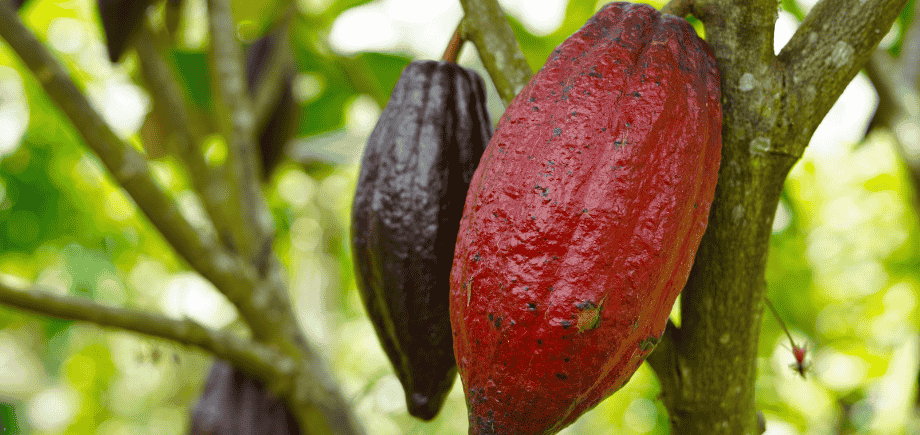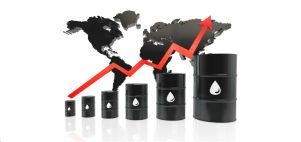The commodity market on March 17 marked the second consecutive week of silver price increases, reaching a four-month high. Meanwhile, cocoa prices returned to the $7,867/ton mark – the lowest level in the past four months.
Cash flow is bustling into the metal market
The past trading week witnessed an impressive increase in the metal group, when most commodities recorded strong increases. Increased demand for shelter and optimistic expectations about the Chinese economy became the main driving force for metal prices to increase.
At the end of the week, silver prices jumped 5.04% to $34.19/ounce, marking the second consecutive week of increase and establishing a high level in more than four months. Platinum also recorded a strong increase of 4.83%, to $1,013/ounce, up 11% from the beginning of the year.
Cash flow poured into precious metals as concerns about the US economic recession increased and trade tensions escalated. The Trump administration’s increase in import tariffs could increase production costs, push up prices and affect consumer purchasing power. Manufacturing businesses that rely on imported components also face greater cost pressure, increasing the risk of shrinking production scale and slowing economic growth.
Market developments on March 17 also closely monitored US trade policy, as the possibility of imposing reciprocal tariffs, copper tariffs and additional tariffs on European goods remains open.
In addition, the latest data on the US Producer Price Index (PPI) and Consumer Price Index (CPI) showed that inflationary pressures are easing, opening up room for the US Federal Reserve (Fed) to cut interest rates. If the Fed lowers interest rates, the USD may weaken, making precious metals such as silver and platinum more attractive to investors.
Not only precious metals, the base metals group also had a good trading week. COMEX copper prices increased sharply by 3.95%, reaching 4.9 USD/pound (equivalent to 10,793 USD/ton) – the highest since late May 2024. Tin prices on the London Metal Exchange (LME) jumped 8.5% to 35,282 USD/ton, while iron ore prices also recorded an increase of 3.5%, reaching 103.9 USD/ton.
The main driver for the base metals group came from the announcement by the People’s Bank of China (PBOC) on March 13 of its plan to cut interest rates and reserve requirement ratios at appropriate times. This loose monetary policy helps maintain abundant liquidity, creating positive sentiment for the commodity market.
In addition, copper prices were supported by the risk of supply shortage in the US, after the US Department of Commerce announced the possibility of imposing high tariffs on imported copper. This move is aimed at encouraging domestic production but could limit supply in the market, pushing copper prices up.
Meanwhile, iron ore prices continued to benefit from the prospect of rising demand in China. According to a survey by Mysteel, as of March 13, the average daily hot pig iron output at Chinese steel mills increased for the third consecutive week, reaching 2.31 million tonnes. With the peak construction season starting in March, iron ore demand is expected to continue to increase in the coming period.
Cocoa supply surplus forecast after three years of deficit
The industrial raw material market ended the trading week from March 10 to March 17 in the red. Notably, the May cocoa contract price closed the weekend down 3.73% compared to the reference price, down to 7,867 USD/ton – the lowest level in 4 months. Overall for the week, the price of this item decreased by 5.13%.

In late February, the International Cocoa Organization (ICCO) forecast a global cocoa surplus of 142,000 tonnes in the 2024-25 crop year, marking the first surplus after three years of deficits due to strong output from West Africa. ICCO also forecasts world cocoa production to increase by 7.8% compared to the previous crop year, reaching 4.84 million tonnes. In addition, on March 13, cocoa inventories monitored by ICE at US ports recovered to their highest level in more than three months. In addition, positive information about export growth in leading cocoa producing countries such as Ivory Coast and Nigeria was also a factor causing cocoa prices to fall sharply.
Arabica coffee prices closed the trading session on March 14 down 1.87% to $8,316/ton, the lowest level in two weeks. At the same time, Robusta coffee prices also decreased by 0.82% to 5,397 USD/ton. However, compared to the reference price last week, Robusta coffee prices increased by 0.82% while Arabica coffee prices decreased by 1.87%.
Arabica coffee prices are under downward pressure due to favorable weather forecasts in Brazil. According to Somar Meteorologia, the Minas Gerais region – the country’s largest Arabica growing region – will have widespread rain next week, helping to reduce concerns about drought. Along with that, the amount of certified Arabica coffee in New York increased by 8,652 bags last week, to 802,277 bags. Meanwhile, Robusta coffee prices were supported as ICE-monitored inventories fell to their lowest level in a week and a half, to 4,288 lots.
Another factor that could affect the coffee market in the coming time is the US tariff policy. According to the latest information, coffee imported from Mexico may be subject to an additional 25% tax due to the exclusion of this item from the North American Free Trade Agreement (USMCA).
After two consecutive weeks of decline, sugar prices increased sharply by 4.63% in the trading week due to concerns about tight supply. Recently, the International Sugar Organization (ISO) raised its forecast for a global sugar deficit in the 2024-2025 crop year to 4.88 million tons, nearly double the forecast of 2.51 million tons in November 2023. This shows that the market is facing the risk of a supply shortage, in contrast to the surplus of 1.31 million tons in the 2023-2024 crop year.
In Brazil, the crop supply agency (CONAB) also lowered its forecast for sugar production in the 2024-2025 crop year from 46 million tons to 44 million tons due to drought and unusually high temperatures. India also recorded a decline as the country’s Sugar and Bioenergy Producers Association lowered its production forecast to 26.4 million tonnes, down from 27.27 million tonnes forecast in January.











